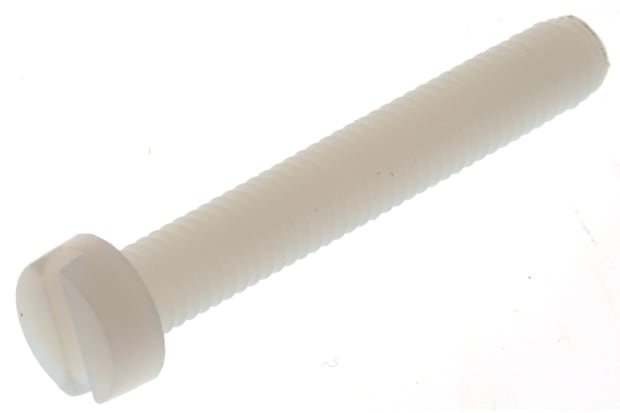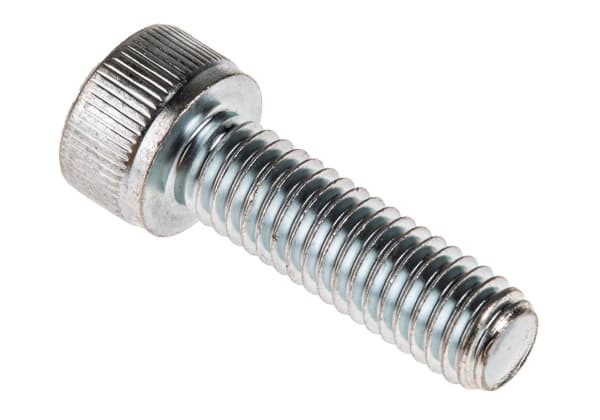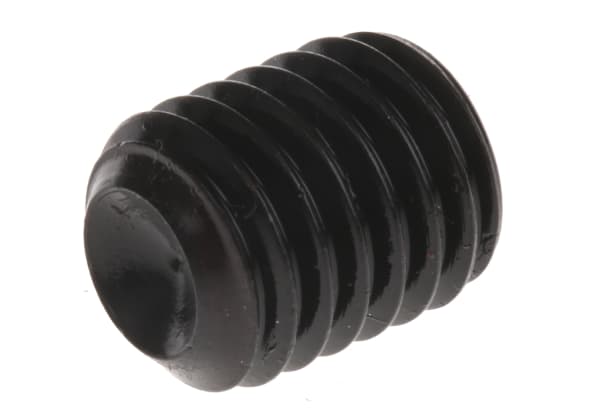- Published 11 Jan 2023
- Last Modified 29 Aug 2023
- 8 min
A Complete Guide to Machine Screws
Our machine screws guide provides everything you need to know about the types, sizes, and uses of a machine screw.

Our guide is here to provide you with a clear overview of machine screws, helping you to understand exactly what they are and which sorts of applications they are commonly used in. We also cover the best types of machine screws for specific tasks and explain the circumstances in which you may need machine screws in your toolbox.
What are Machine Screws?

There are countless different types of screws, bolts, and other fasteners and fixings. Machine screws are one of the more widely used products among dozens of standard fastener types.
Despite their widespread use, there is no strict definition of a machine screw. The term ‘machine screws’ covers a broad range of fastener varieties.
There are numerous different models, sizes, materials, and configurations of machine screw available, including:
- Stainless steel machine screws
- Brass machine screws
- Plated machine screws
- Slotted or flat-head machine screws
- Phillips head machine screws
- Torx head and hex head machine screws
- Fillister or cheese-head machine screws
- Pan head machine screws
- Tamper-resistant machine screws
Machine screws can be either coarse-threaded or fine-threaded, and are usually available with a wide range of head types, as demonstrated above. So, what is a machine screw, and how can you easily define one? Moreover, how exactly are machine screws different from other types of bolts or fixings?
The simple answer is that machine screws are usually distinguished from other common fastener types like wood screws by their physical features and intended uses. Some of their typical physical characteristics are outlined below:
- Standard machine screws tend to be somewhat smaller (both in length and diameter) than many other types of bolts and fasteners
- Machine screws are almost always blunt-ended (flat-tipped), unlike many other screw types which taper to a sharp point at the tip
- Although this isn’t always the case, most machine screws are fully threaded, meaning that the threading runs the full length of the fastener shank from just below the head right to the end
- Machine screws are usually stronger than many other screw types. They are manufactured to high standards using refined techniques, providing better all-round quality, precision, and thread uniformity
- Machine screws are typically designed with finer, more accurate threads than alternative fastener types. They are generally intended for use with a pre-drilled interior tapped hole or a nut
- Machine screws are most often used for fastening metal parts securely together in various types of machinery or construction. Other uses include vehicles, engines, tool assembly, electronic devices, and large-scale industrial equipment
Machine screws are sometimes abbreviated to ‘MS’. Certain types of machine screw might also be called ‘stove bolts’ in various specific applications.
What are Machine Screws Used for?
The most common applications that machine screws tend to be used for involve metal parts and panels needing to be fixed securely together. This is a daily requirement across all manner of industrial, manufacturing, construction, assembly, process, and production environments.
How do you use machine screws? Simply put, you use machine screws in much the same way as you would use any other type of screw or bolt.
Follow the below steps for guidance on using machine screws:
- You use a machine screw by drilling or tapping it into a pre-drilled hole or nut, using either a manual or powered screwdriver
- Power tools are frequently associated with the use of machine screws. This is because fasteners of this type are typically demanded in more heavy-duty or industrial-scale assembly and construction jobs
- In the vast majority of scenarios, machine screws will be used with a nut and driven into a pre-drilled (tapped) hole. When using a nut with a machine screw, the nut will typically go behind the rearmost component or part being fastened
- Machine screws are versatile and are often used to join two or more different parts or components. Sometimes, they are also chosen to hold down or sandwich gaskets and membranes, as well as being used on terminal strips and for making numerous other sorts of electrical connections
- A handy alternative use for machine screws is to separate and secure parts or panels which need to be kept at a fixed distance from one another. This is achieved via a type of threaded coupling which allows two machine screws to be driven in from opposing directions. The separation distance you require between parts will dictate the length of the coupling inserted between the two fasteners
Machine Screw Types
Machine screws are widely available with a variety of different sizes, head types, materials (stainless steel machine screws are common, but alternatives are available), and thread gradings.
The following sections summarise some of the most popular machine screw types that are commonly available:
Head Types
Choosing the right head type for the application you are working on is an important distinction. Note that for this guide, head types and drive types are dealt with in separate lists. The head types outlined below refer to the overall shape of the machine screw head, rather than the drive type of slotting.

Hex Head Machine Screws
Hex head machine screws (sometimes called set screws) are usually the type that most closely resembles traditional bolts. This is largely due to the familiar head shape of both fasteners – a solid, six-sided hexagon. In some applications, hex head machine screws may be installed using a standard wrench or spanner for extra torque. However, they may also have a recessed drive socket in the head, indicating that they are meant for use with a more typical screw driving tool.

Flat Head Machine Screws
Flathead machine screws are chosen for applications where the installed fastener needs to sit flush with the surface it is being driven into. A flattened top and countersunk underside profile mean that they offer a neat and flush surface finish on joined panels and components.

Oval Head Machine Screws
Oval head machine screws offer something of a middle ground between the traditional, industrial pan head (round head) machine screw, and a flat head version. While pan head machine screws remain noticeably raised from the surface once driven home, oval heads are less noticeable due to a curved underside creating a slightly countersunk profile. However, they do not countersink as neatly as flat head machine screws.

Cheese Head Machine Screws
Cheese head screws are similar to traditional round head screws when viewed from above, but in profile, the flat-topped head is cylindrical and has a notable amount of depth to it. This type is often chosen for extra strength and durability.
Machine Screw Drive Types
Machine screw drive types (socket types) refer to the shape of screw driving tool you will need to fasten or unfasten a particular machine screw from a threaded hole or nut. Common machine screw socket types include:
- Slot – a common standard featuring a single straight socket running across the head of the machine screw, for fastening with a flathead screwdriver
- Cross or Phillips – cross drive machine screws have an X-shaped socket in the head, providing slightly more potential torque than a standard slot drive
- Hex – hexagonal recessed drive sockets in the head of the machine screw usually indicate that they are to be driven with a hex driver or Allen wrench
- Hexalobular Recess – often called Torx or star drive, the socket takes the shape of a six-pointed star, and can only effectively be driven with a matching star drive or Torx tool
How to Measure Machine Screws
There is a wide range of machine screw sizes available, and knowing how to measure machine screws is another important step in choosing the right fastener for the job at hand.
Machine screws can be measured and sold both by thread size (usually referring to the nominal diameter of the threading, i.e. the functional width of the screw) and by length. Length is typically measured from immediately below the head to the tip of a machine screw. However, it is usually worth double-checking whether a given screw length measurement includes the head portion or not. Most often, it will not.
What Does M2.5, M3, M3.5, M4, and M5 Mean?
A widespread standard for sizing measuring screws according to diameter is by using the metric scale. For machine screws sold under metric gauges, the letter M will be followed by a number. The higher the number, the larger the screw will be in diameter.
Particularly common examples of metric sizes in everyday use include:
For each of these measurements, the number after the M is the nominal outer diameter of the screw in millimetres.
FAQs
How Do I Cut a Machine Screw?
Sometimes, you might find that you need to cut bolts and machine screws of various types shorter than the standard lengths available. This can be necessary for situations where you need to prevent overhang or fix other alignment issues. Standard bolt cutters will do the job, but they can damage threading or leave an untidy finish.
Instead, one of the best ways to cut a machine screw without damaging the threads is to use a pair of electrical pliers (a crimp tool) which features a series of metric sizing crimp holes near the hinge. These are common on certain crimp tool die sets.
In a pinch, you can also use a hacksaw to shorten a bolt or machine screw. However, you are more likely to damage the threading this way, and you may need to finish the cut end with sandpaper or deburring tools afterwards.
Is a Machine Screw a Bolt?
The exact difference between machine screws and bolts is not always clear, particularly as their appearance is similar. However, machine screws are typically smaller than bolts, although a more precise distinction is the way that they are tightened in a tapped hole.
Bolts tend to be driven home and then tightened fully by turning the nut on the rear side of the fastening. With machine screws, the majority of tightening force (torque) is applied to the head of the screw itself when driving it into a tapped hole.
A further dissimilarity for bolts vs machine screws is that while all machine screws can be effectively used as a type of bolt, the same is not necessarily true in reverse. In other words, not all bolts can perform the full range of functions as a machine screw.



